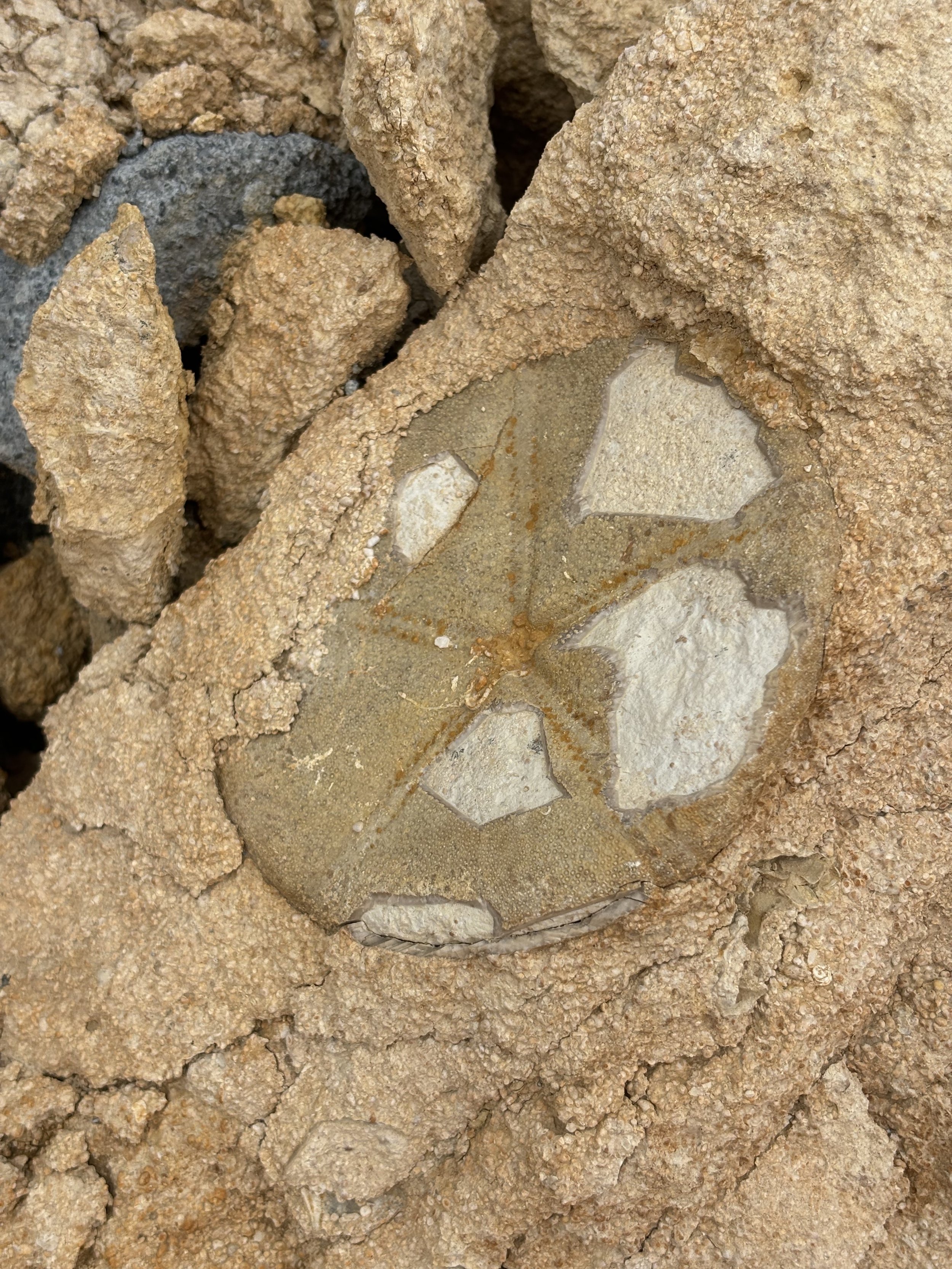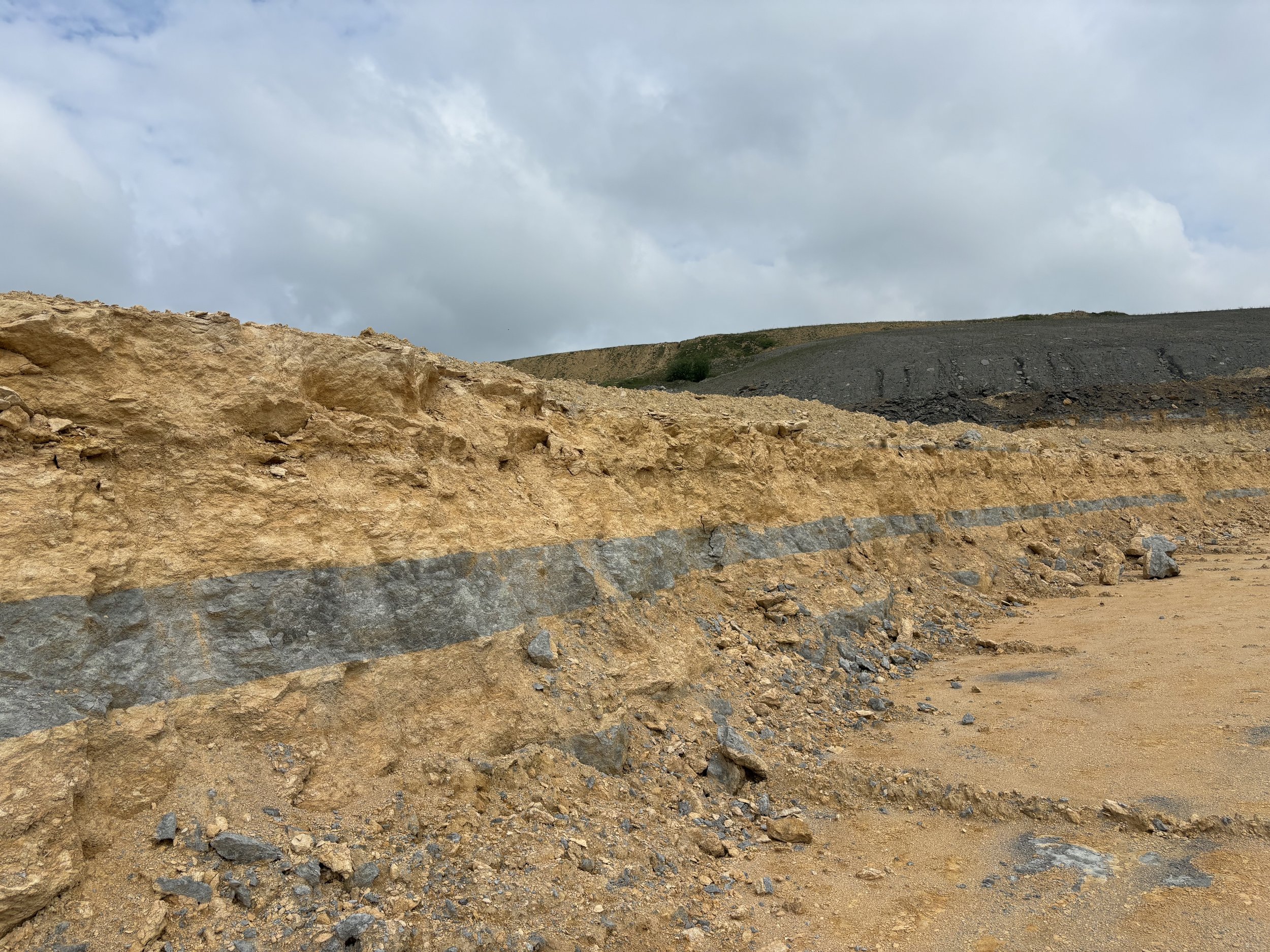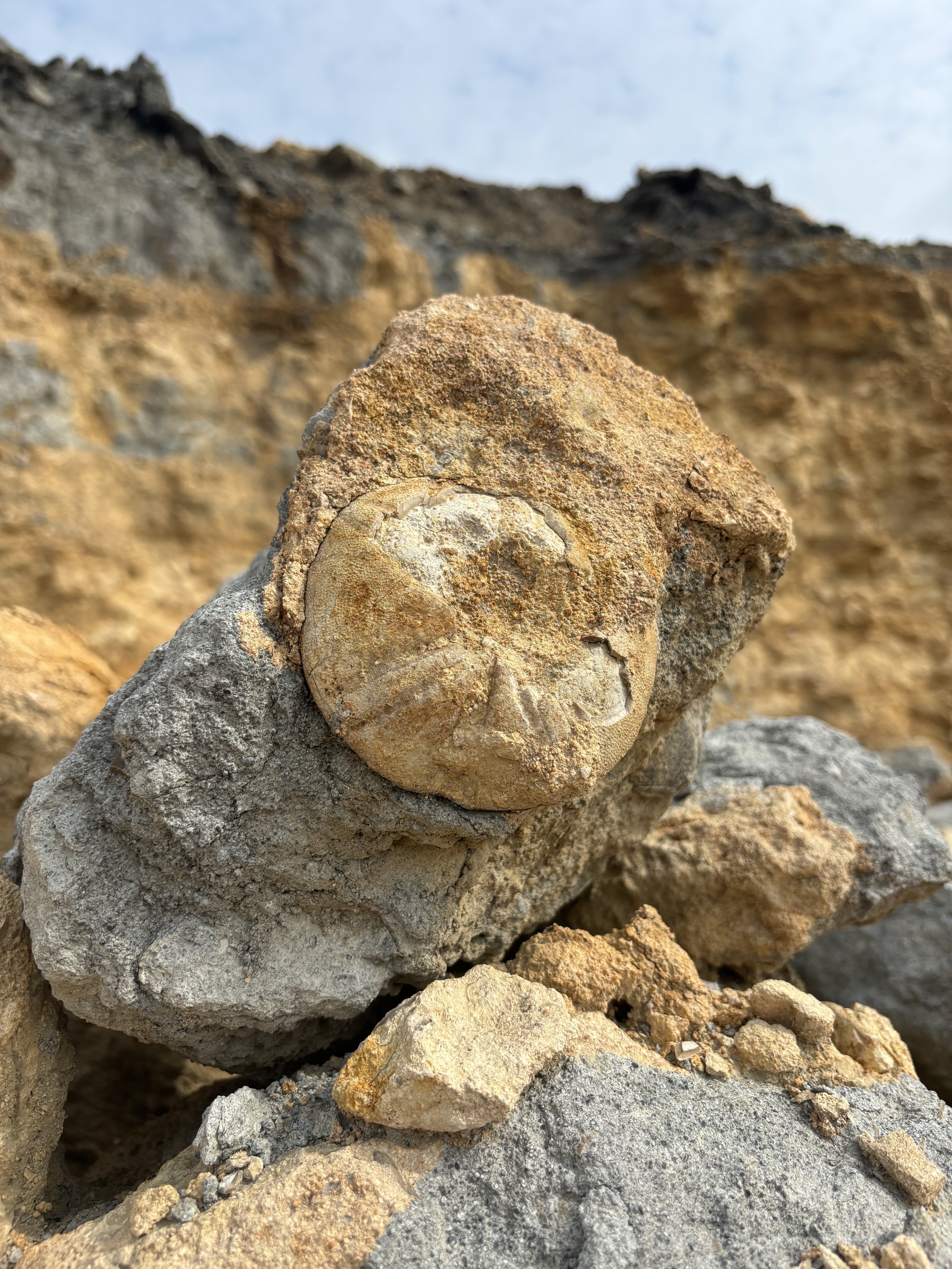
Past Field Trips: In Detail
BIRCH HILL QUARRY, COLEFORD
19th JULY 2024
This most recent field trip for the CMGS was to the Carboniferous Pennant sandstone quarry near Coleford in the Forest of Dean, turned out to be a fascinating experience. The swamp conditions with abundant rich vegetation, which produced the Forest of Dean coal, were superceded by a general uplift and widespread change in sedimentation to a great thickness of deltaic sediment known as the Pennant formation. Cycles of swamp decay and sedimentation produced alternating layers of coal and sandstone, and where the sandstone has formed in contact with the organic vegetation there are fossilised remains of tree and bits of tree.
This quarry had plenty of quite photogenic examples of these fossils and also shows up faults, joints and bedding features. The quarry management were exceptionally helpful and accommodating, and would welcome further visits.
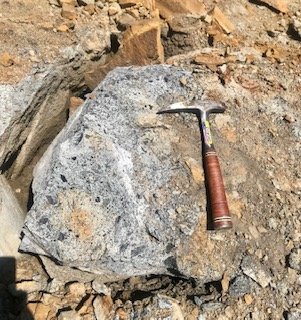


GRUNDON’S QUARRY
BISHOPS CLEEVE
13 July 2024
Four members attended, we were met by the new Landfill Manager, who checked us in and accompanied us to the relevant areas, along with his partner. It was encouraging to see their enthusiasm for the fossil-hunting potential of the quarry. In addition to the clay dump, somewhat depleted, and the familiar high bank on the north side of the site, he allowed us into a newly dug pit alongside the railway where there was some hope of finding in situ ammonites, although in the event not much was found here. The weather was excellent for the visit; bright, but not too hot, and recent rain had washed some specimens to the surface on the high bank. The new manager is relaxed about future visits and personally prefers that visits take place on a weekend rather than a working day, which opens up opportunities for junior members.
Some of the finds, mostly the usual pyritised ammonites, are shown below.

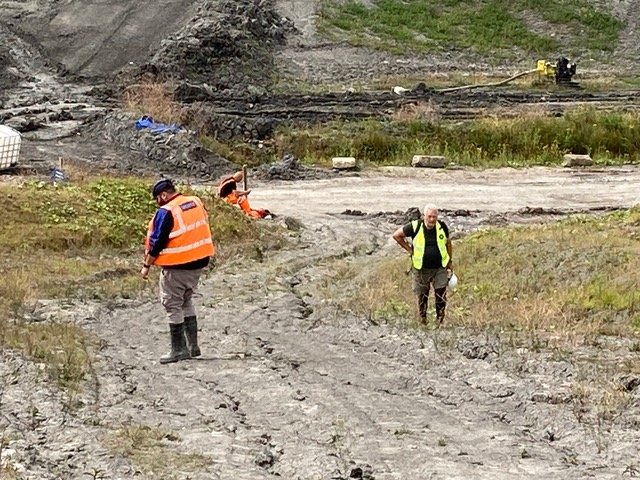

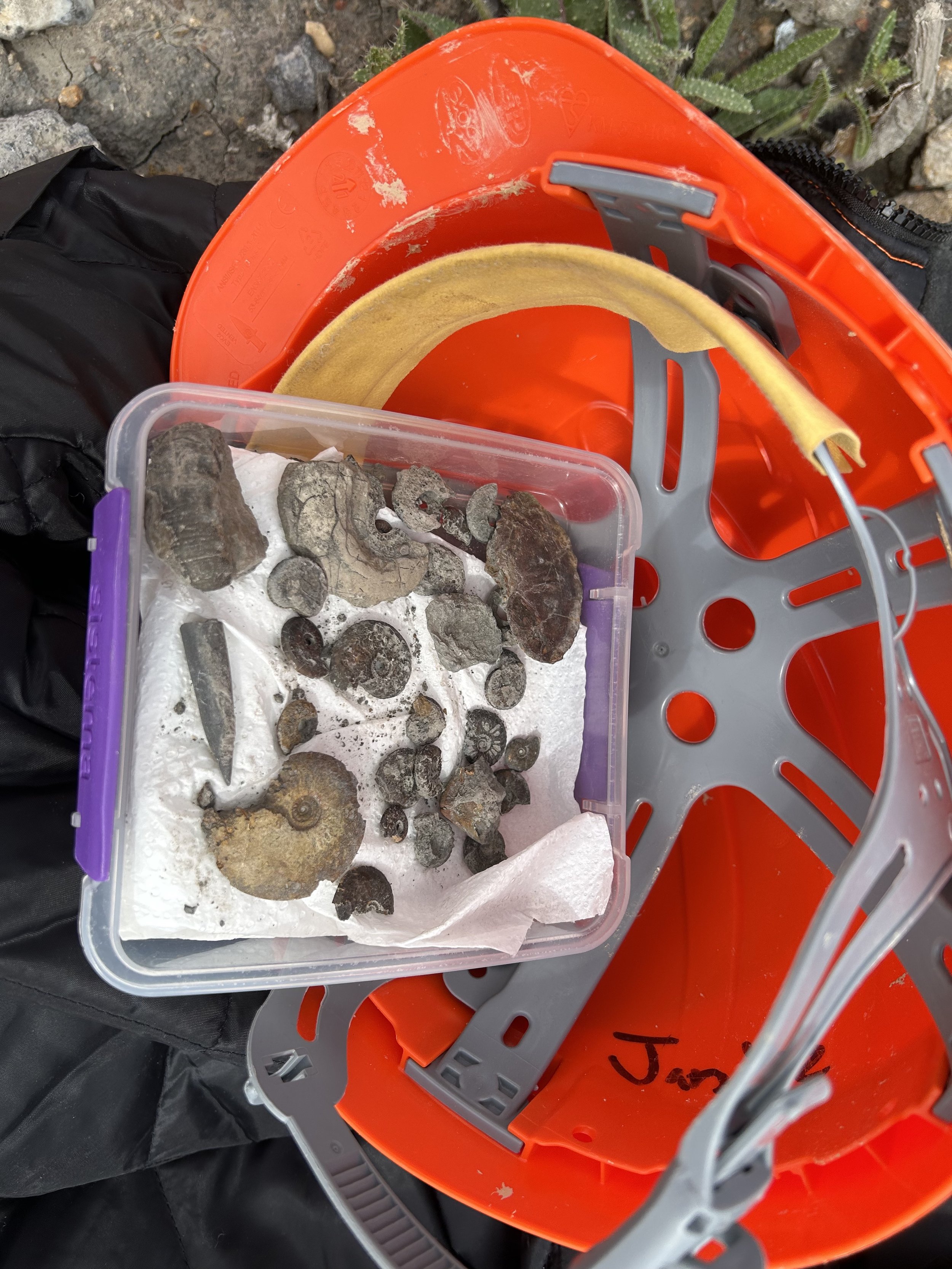

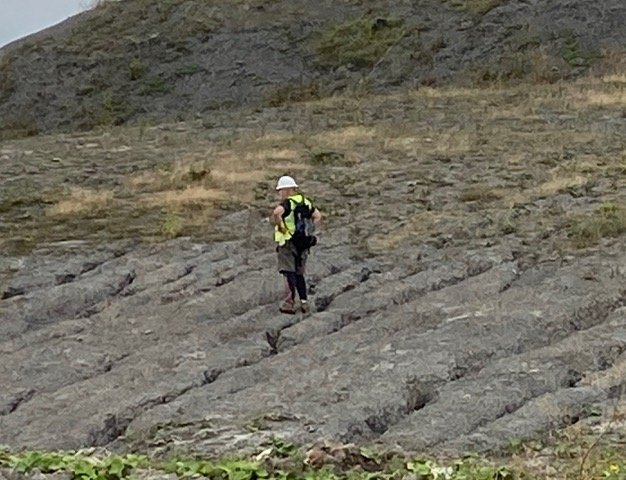
NAUNTON QUARRY
18th May 2024
Naunton Quarry (formerly Huntsman’s Quarry) has been inaccessible to fossil collectors since its purchase by Breedon’s in 2014, but on 18 May seven CMGS members were taken into the quarry by quarry manager Paul Joynes and Breedon’s Technical Director Mark Mitchelmore. In the 4-hour visit we were taken around the seven major formations of the Great Oolite series which are being exploited in the quarry, with explanations of the geological sequence we were seeing. Good quality fossils were abundant across the various formations, and most people filled their bags with echinoids Clypeus Ploti: there were also many gastropods, brachiopods and bivalves typical of the Great Oolite series, and one solitary ammonite - a rare find. No dinosaur footprints were spotted, nor any fossil reptile or fish remains.
On the way out of the quarry, we were shown an outdoor display of large ammonites of unknown provenance, but assumed to have originated in Huntsman’s Quarry at some time in the past. One of these was in a condition which could be much improved by a skilled preparator, and Tom Carr offered to do this work so that the specimen could eventually be added to the company’s impressive display cabinet in the reception block. The offer was eagerly accepted.
